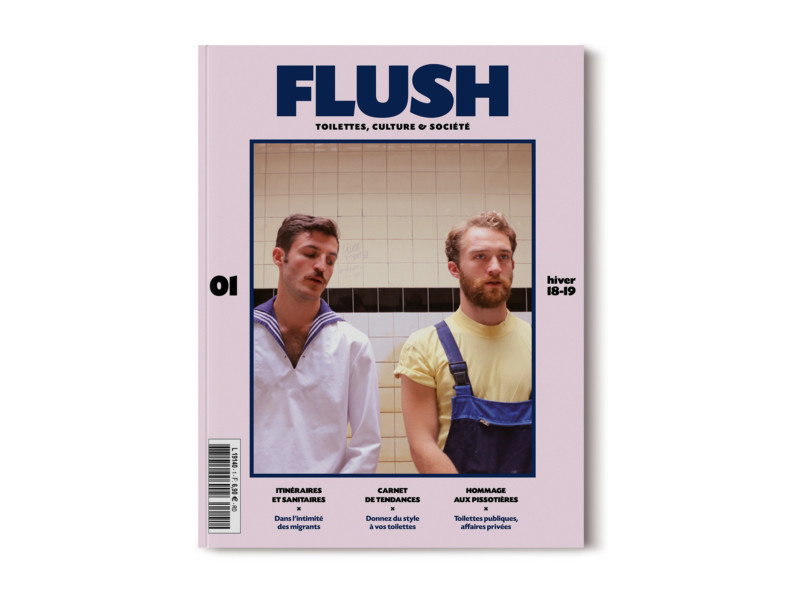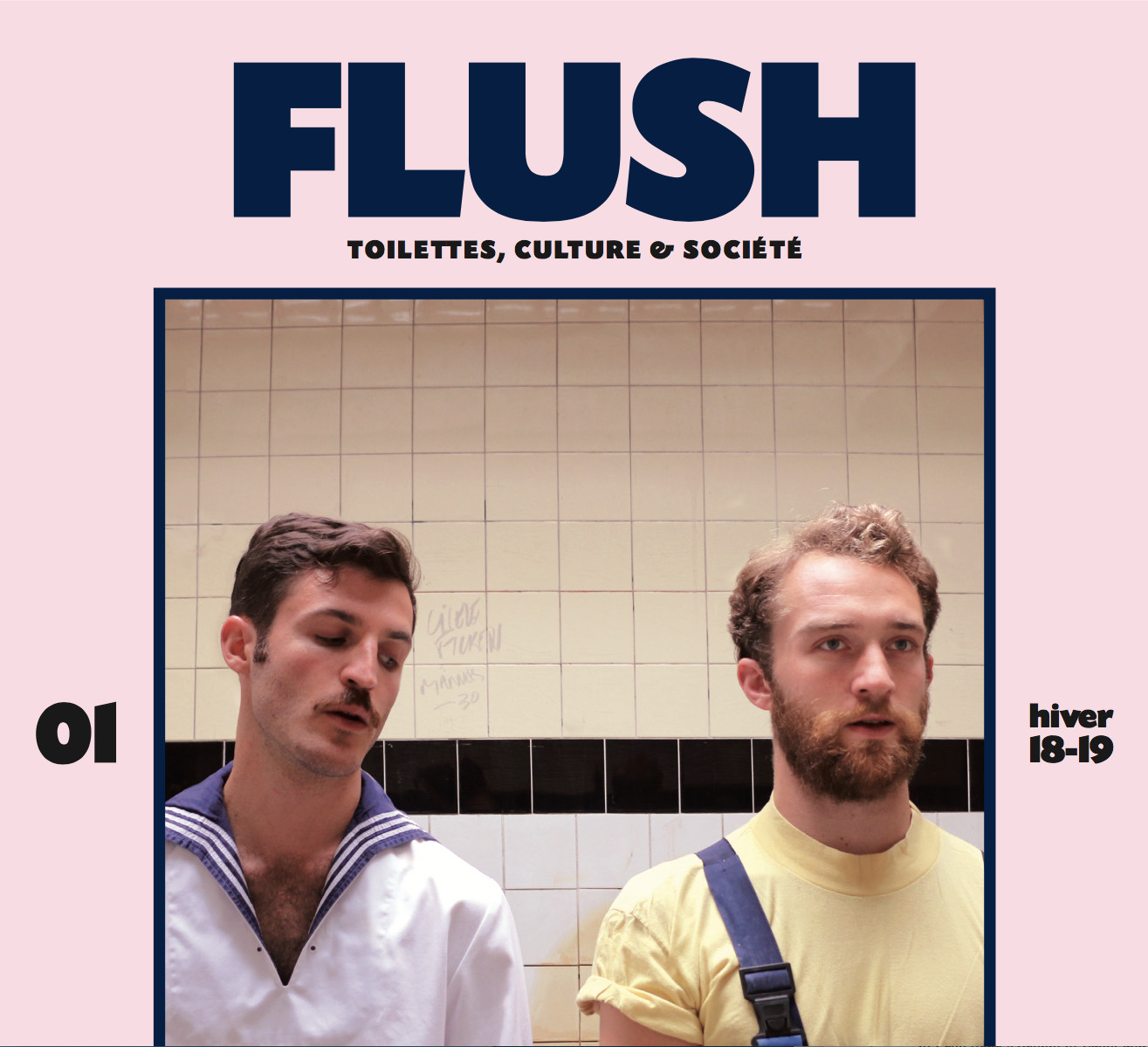Sign up for The Media Today, CJR’s daily newsletter.
In 2014, Aude Lalo started a blog about toilets. She called it Les Pisseuses (French slang that literally means “pissers,” but is used in a variety of contexts). She used the blog, initially, to review public restrooms in her native France. A Lyon bakery’s—“Welcome to Versailles!”—was among the good ones. A municipal toilet near Vannes train station—“What’s this on the dirty floor? Please don’t tell me it’s a used condom”—was among the worst.
If the blog was initially tongue in cheek, Lalo soon saw the more serious side of the toilet beat. “I quickly came to understand that there were really crucial social challenges that you could find around toilets,” she says (CJR translated its interview with Lalo). Lalo realized that restrooms, and the act of going to them, could be a prism through which to address topics from health and sanitation to ecology, urbanism, and the social relations between different groups—in Swiss stations, for example, women have to pay a third more than men to use equivalent public facilities.

Aude Lalo. Photo: Camille Brasselet
Lalo folded some of this analysis into her blog as it began to get talked about. She also started meeting people from within the toilet ecosystem: bathroom-industry figures enthused by the prospect of a channel dedicated to their products and campaigns. This professional interest, Lalo says, was a game-changer. “When we talk about fishing, for example, you can find I don’t know how many magazines about it,” she says. “But with toilets—which, logically, concern everyone—there wasn’t one.” She saw an opening to do something new.
That something new is Flush magazine, a sleek quarterly which describes itself as about “toilets, culture, and society.” Flush hit newsstands in mid-November; its official launch followed a week later to coincide with World Toilet Day. Its debut generated some buzz in France. Adverts for the magazine cropped up in restrooms, with brief articles about toilets pasted to the backs of cubicle doors—informing users, for example, that it’s illegal to use your newspaper as toilet paper in Turkmenistan. Online, the magazine ran a Flashdance-inspired video (called “Flushdance,” obviously) drawing heavily on the original’s iconic, and punnily convenient, water scene. And French media circles took note: Lalo was invited to TV and radio studios where she patiently explained her product to bemused-sounding hosts.
Flush was the magazine some readers had been waiting for. “As soon as it came out we received letters from people saying, this is great, I love it, I’m a toilet enthusiast,” Lalo says. Interestingly, Lalo does not see herself in the same light. “It was more the intellectual aspect of it that interested me,” she says.
It’s this approach that differentiates Flush from the countless niche publications—powered by obsessive readerships or industry ad dollars—that exist around the world. The concept behind Flush, Lalo says, is journalisme par l’objet, or journalism through the object. “It’s through the object—through the function, in fact, of going to the toilet, of relieving yourself—that we can say things,” she says. “We’re undeniably in a niche… I don’t know of any other magazine, at least in France, on this topic. On the other hand, toilets are universal.”
A typical issue of Flush consists of four sections, which, together, offer readers a broad, 360-degree view of the world according to toilets. The first section rounds up toilet news from around the world; the second features industry trends, including in restroom design and products (anyone for a $45 matte-black toilet brush?). A “dossier” in the third section focuses principally on a big social or political theme—the debut issue focused on migration, including sanitary conditions in migrant camps, and the next will look at prisons. And the fourth section is dedicated to culture, including a quick interview with a celebrity “on the throne,” and a look back at a classic movie scene set in a restroom.
A typical article from the first issue reflects on urinal etiquette and the concept of masculinity, drawing on the University of London’s finding that 7 percent of men have paruresis, or a phobia of urinating in public. Another features a debrief on World Water Week, an annual event grouping researchers, NGOs, and politicians in Stockholm, Sweden, and the human waste disposal and water-cleaning innovations on the table for 2019. And another looks at how two French cities—Paris and Nantes—waged war on peeing in the street, which is, apparently, an “ecological catastrophe” because, apparently, urine is corrosive.
“I think the people who bought Flush at the newsstand bought it because they wanted to be surprised,” Lalo says of the first issue. “Lots of publications talk about migrants, but no one talks about like them like we do.” Another surprise for readers was Flush’s rich design—it’s stacked with original cartoons, illustrations, and artwork. Lalo sees this aesthetic potential as a perk of print (she stresses that her now-defunct blog and Flush are very different products, even if the former begot the latter). “Paper is a quality medium, and for me it was important that this project is quality, because toilets can quickly become a slippery slope—if you’ll pardon the expression,” she says. “One of the principal challenges, from an editorial point of view, was to raise the tone, to make something high-range, which wasn’t vulgar.”

Courtesy photo: Aude Lalo
Lalo won’t reveal the magazine’s circulation (it’s too early for the figures to be meaningful, she says). But she will say that the first issue of Flush, which is independently owned, was stocked by over 4,000 newsstands across France. Its sticker price rings in at just under $8, with a year’s subscription slightly discounted from that rate. To keep fixed costs low, Lalo runs a small shop. The magazine does not have an office, and its 68 quarterly pages are filled by freelancers.
If all goes well, Lalo may even consider international expansion one day: “I’d love to! Flush US, Flush UK, that’d work well with [the word] ‘flush.’” She laughs, then turns serious. “But we’d need local editorial staff. You can’t just translate content,” she says. “The relationship with the toilet is very cultural. It changes from one country to another.”
ICYMI: Trump’s America, through the eyes of the French
Has America ever needed a media defender more than now? Help us by joining CJR today.



